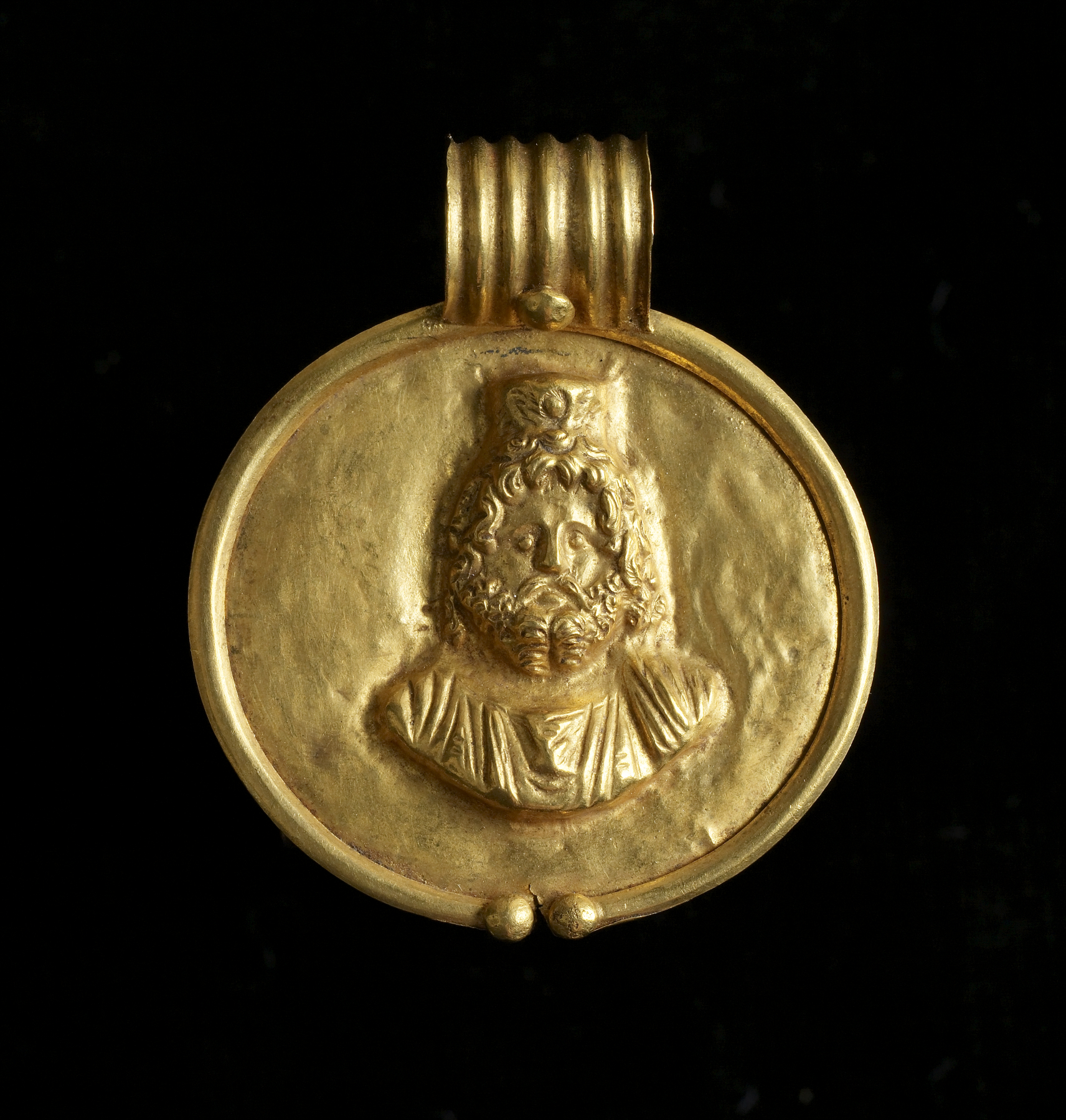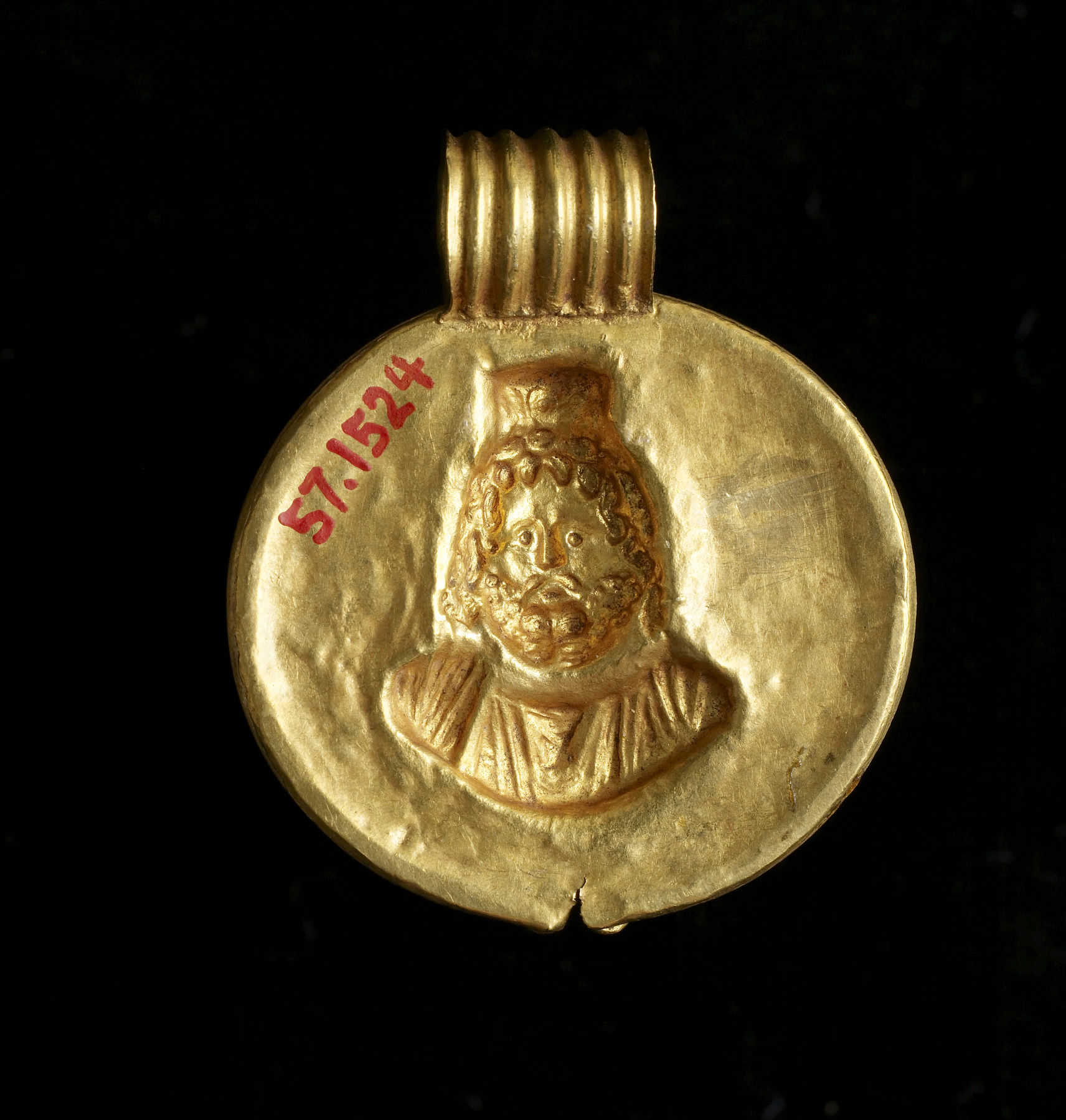Pendant with Image of Sarapis
The god Sarapis emerged in Egypt at the beginning of the Hellenistic era, when the country was occupied by Alexander the Great (332 BC) and a dynasty of Macedonian kings, the Ptolemies, ruled Egypt. It was Ptolemy I (305/304-282 BC) who gave the order to develop a new religious cult for his dynasty and the Egyptian state, and he dedicated the first temple to Sarapis at Alexandria for this purpose. For the Greeks, the creation of a new god was something extraordinary, but for the Egyptians the modification of religious concepts to fit new needs was a long-standing tradition. The priests chose the Egyptian god Osiris-Apis (named later also Osorapis), who was a protective deity, a god of oracles, and lord of time and eternity. They modified his name to Sarapis, and gave his visual representation a Hellenistic form, appropriating the shoulder-length hair and full beard of the Greek supreme deity Zeus; the "kalathos"--a woven grain basket--with which Sarapis is often crowned, symbolizes fertility.
The participation of Egypt's Greek population in rituals for Sarapis and the Hellenized Isis was an expression of their loyalty to the dynasty (native Egyptians clung to their traditional gods), but the worship of Sarapis did not end with the extinction of the Ptolemies. To the contrary: the god became a universal deity in Roman times, venerated throughout the Mediterranean.
Provenance
Provenance (from the French provenir, 'to come from/forth') is the chronology of the ownership, custody, or location of a historical object. Learn more about provenance at the Walters.
Henry Walters, Baltimore [date and mode of acquisition unknown]; Walters Art Museum, 1931, by bequest.
Exhibitions
| 2002 | Serapis: The Creation of a God. The Walters Art Museum, Baltimore. |
| 1988-1989 | From Alexander to Cleopatra: Greek Art of the Hellenistic Age. The Walters Art Gallery, Baltimore. |
| 1979-1980 | Jewelry - Ancient to Modern. The Walters Art Gallery, Baltimore. |
Geographies
Egypt (Place of Origin)
Measurements
H: 1 7/16 x Diam: 1 3/16 x D: 1/16 in. (3.68 x 3.04 x 0.21 cm)
Credit Line
Acquired by Henry Walters
Location in Museum
Not on view
Accession Number
In libraries, galleries, museums, and archives, an accession number is a unique identifier assigned to each object in the collection.
In libraries, galleries, museums, and archives, an accession number is a unique identifier assigned to each object in the collection.
57.1524








